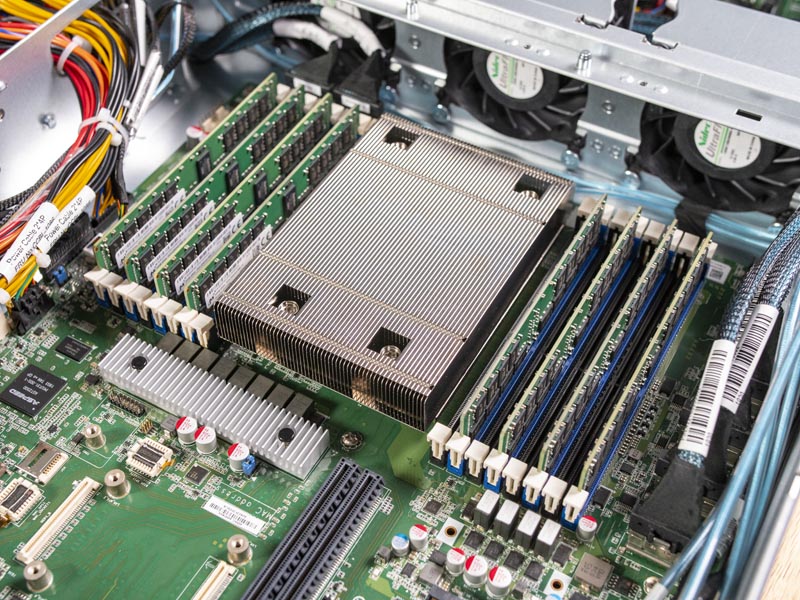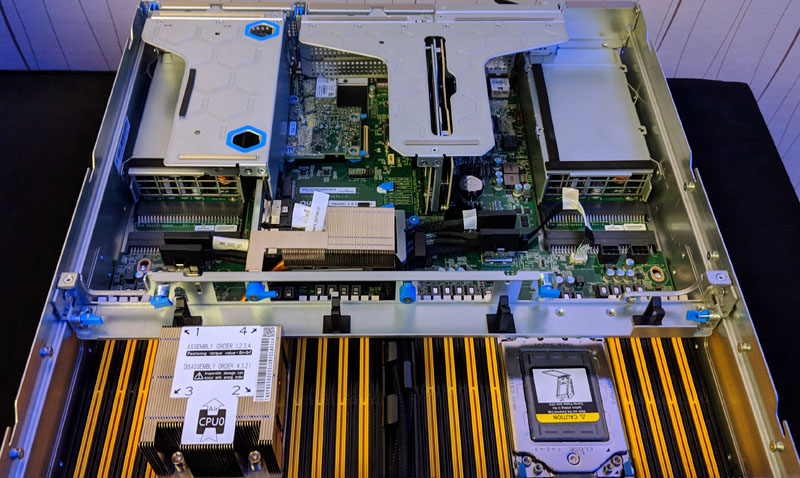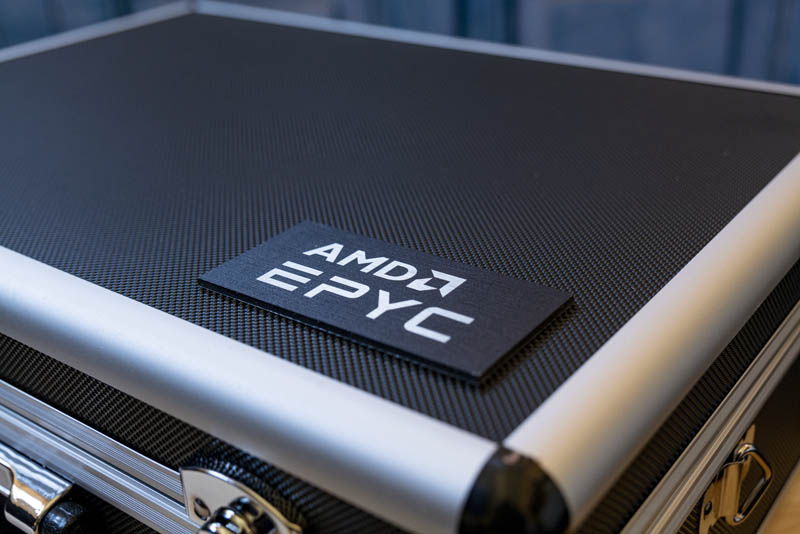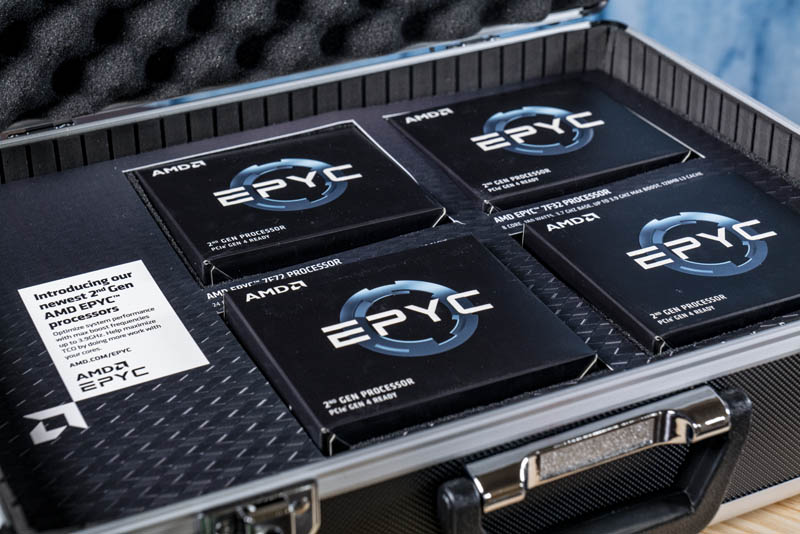AMD EPYC 7F32 Test Configurations
For our testing, we utilized both single and dual-socket configurations to show different aspects of performance, check the 1P story, and gain access to both of our comparison sets.
Test Configuration: Single Socket
For most of our charts, we are using the Tyan Transport SX TS65A-B8036.
- Platform: Tyan Transport SX TS65A-B8036
- CPU: AMD EPYC 7F32
- RAM: 8x 32GB Micron DDR4-3200 RDIMMs
- OS SSD: 400GB Intel DC S3700
- Data SSD: 960GB Intel Optane 905P
You are going to see more about this platform, but this is a PCIe Gen4 single-socket platform from Tyan that has 16x front U.2 NVMe bays, 10x front SATA/ SAS bays, two rear 2.5″ SATA OS SSD bays, six expansion slots on risers and an OCP mezzanine slot. All this is achieved using a single AMD EPYC 7002 series CPU.

Some servers are not going to be designed to accept such high-power CPUs so one needs to watch out for those when shopping for servers. On the single-socket side, it is less of a concern. In form factors such as 2U 4-node, it will be a bigger concern.
Just to note, the topology picture above was using this server to show a single CPU to keep things simple.
Test Configuration: Dual Socket
We also had a test configuration for dual-socket processors. We have been using the AMD “Daytona” reference platform and we had the latest AGESA for this as well.
- Platform: AMD “Daytona” Reference Platform
- CPUs: 2x AMD EPYC 7F32
- RAM: 16x 32GB Micron DDR4-3200 RDIMMs
- OS SSD: 400GB Intel DC S3700
- Data SSD: 960GB Intel Optane 905P

Note, this platform looks a lot like the Quanta AMD EPYC Rome Servers Set to Make a Splash that we covered on a Q4 2019 visit to Taipei, Taiwan.
How the Processors Arrived
Typically, when we get processors we consider ourselves lucky to get a tray with chips. For this launch, AMD went the extra mile and we received the chips in a hard case.

Opening the case we found the two EPYC 7F72 and two EPYC 7F32 CPUs and a little bit of marketing spin.

This was a fun treat that is common on the consumer hardware review side but very uncommon in the realm of servers. Frankly, this is something that we do not want to get with every release. 25-50 hard cases a year would be too much. At the same time, this presentation was awesome to unbox even if it is not going to be the typical customer experience.
Next, let us get to performance before moving on to our market analysis section.




‘F’ is for ‘F-ing confusing’ names.
I like including the HPE numbers. You’re using a Gen10+ for AMD but I get why. You’re basically making the point for why you would in the editor’s note.
We are considering the 7F* models despite the price premium. When your license costs (vastly) dominate your hardware costs, peak per-core performance can rule the day. We’re looking at 7F32 for our critical workloads that gate delivery to manufacturing, and 7F72 for volume workloads as a nod to datacenter space constraints.
Your pg.4 analysis is spot on.
I agree with @HansF1973.
The candor of the product/market analysis on page 4 is refreshing to see in a review article.
I’ve read too many review articles elsewhere that are little more than blah cheerleader material.
3.9 GHz on 8 cores for …how much???! $2100? Those will likely gather some dust on assorted shelves…(too pricey, IMO)
Sadly the processor cost is nothing compared to the licensing fees on a couple of dozen programs, see: https://glennsqlperformance.com/2020/05/20/recommended-amd-processors-for-sql-server/ .
If you are entangled it’s probably worth paying to dig your way out and move to PostgreSQL, MySQL or another open source solution: https://db-engines.com/en/system/Microsoft+SQL+Server%3BMySQL%3BOracle%3BPostgreSQL – though in some cases running under a VM with fewer cores is an option the pain comes when the fine print says that the Enterprise edition must be licensed for a minimum of 16 cores, so it’s twice as bad as first thought.
In some cases (Maya, Ansys, others) there is ‘no’ alternative, trying to get something to look like Maya is an Art in itself, and some things are simply the accepted Standard (a selling point, in a service being offered).
In a narrow set of cases it’s not just the higher clocks and larger cache but also the larger memory, even the reliability; leaving dreams of ThreadRipper short lived and the longevity of Intel solutions better understood (look at the difference in price of the whole, not just a single part).
Still, these processors would need to be more than half as expensive to appeal to me; and I can afford to wait to see what next year brings us.